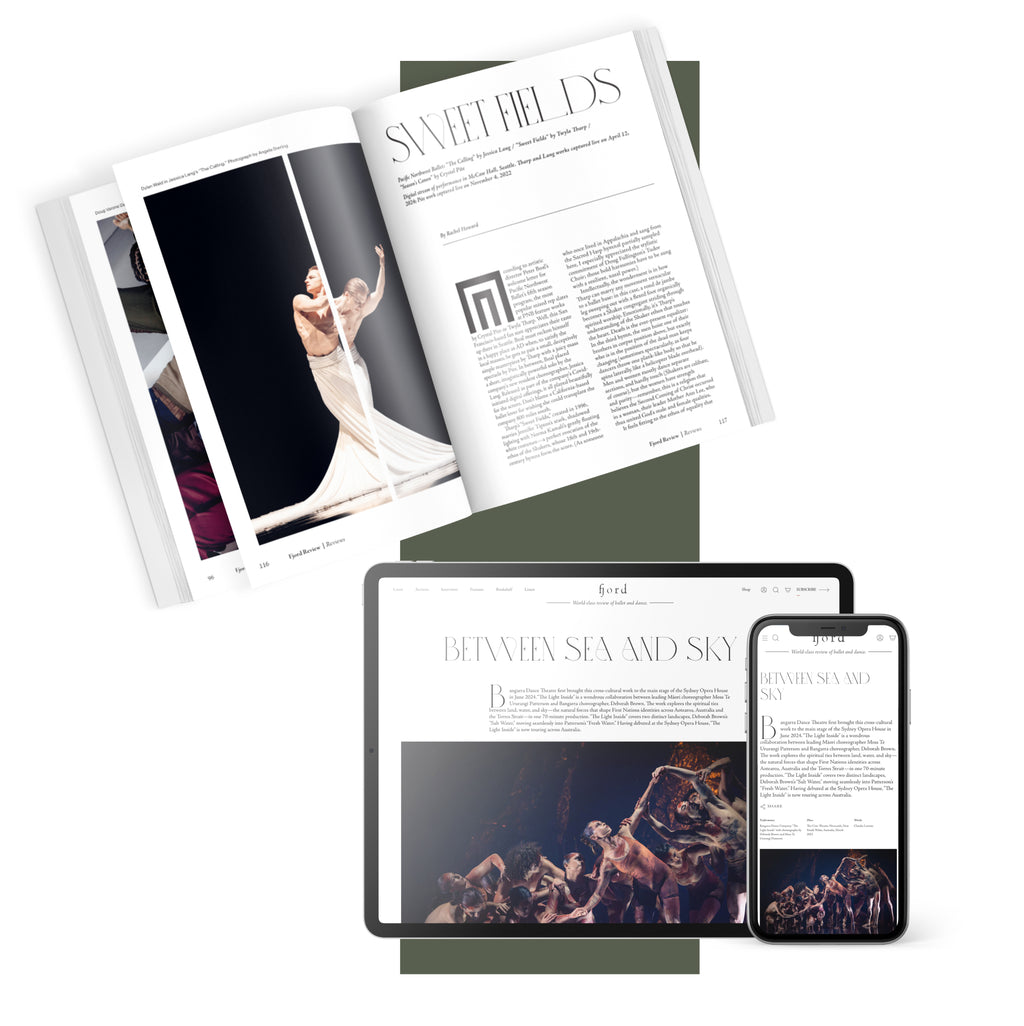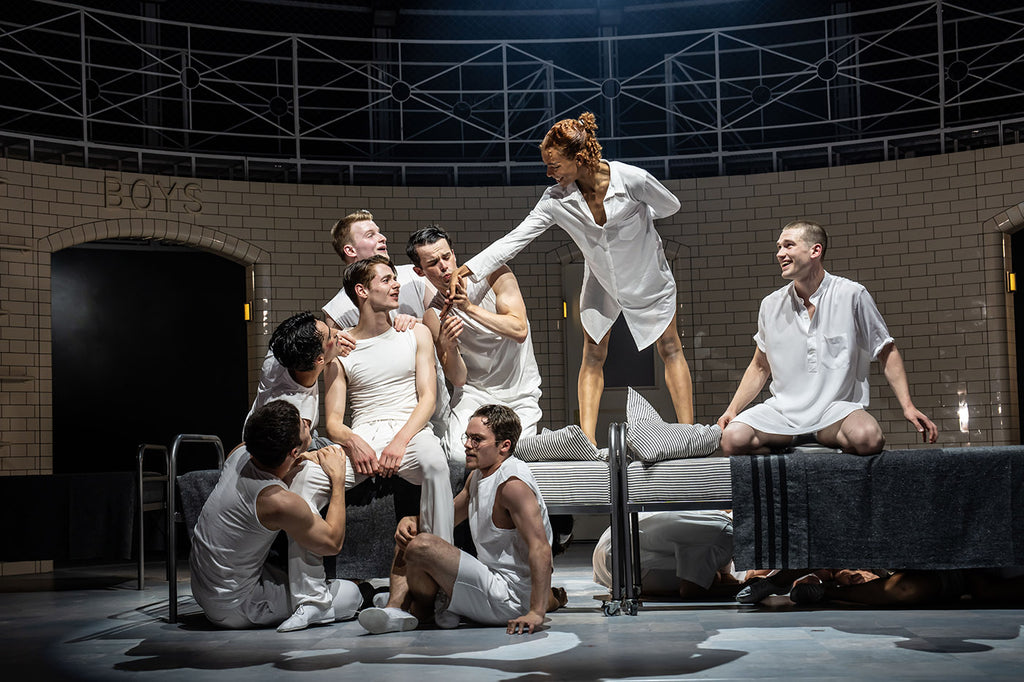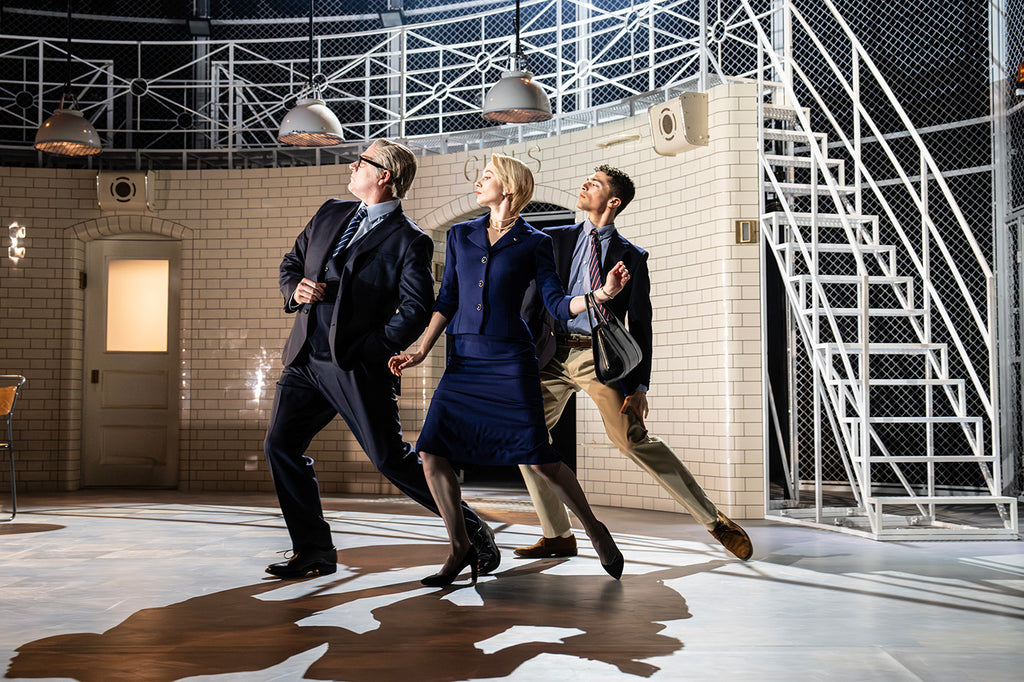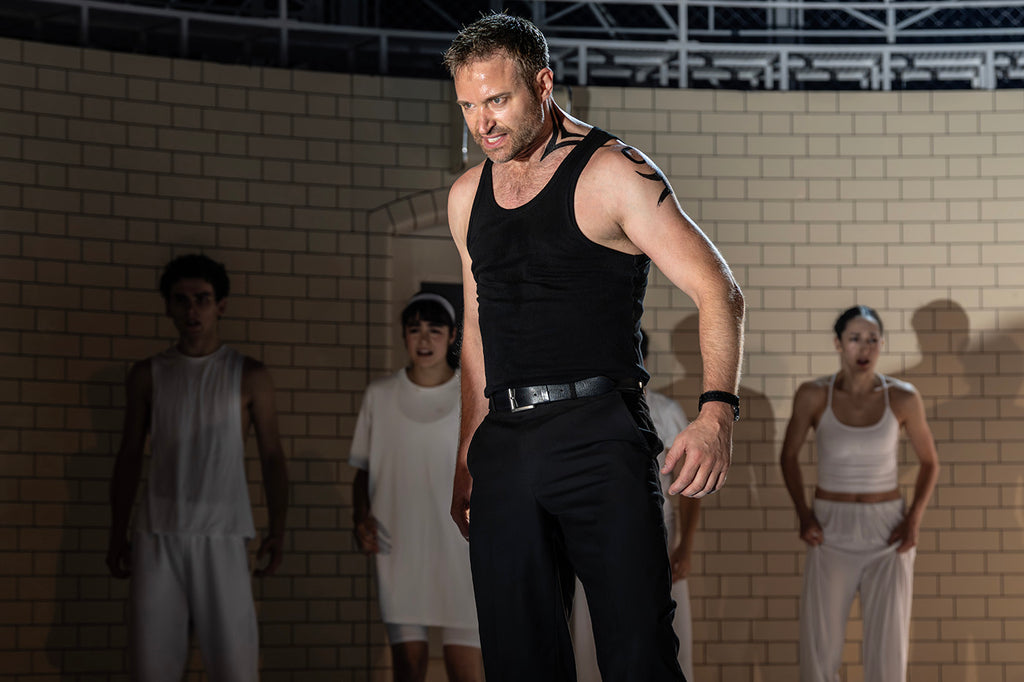Extremely telling, too, is the stiff as cardboard scene where the adolescents are forced into fifties styled finery—it's a clockwork doll style dance, with saucer eyes, surely a cringe—inducing reminder of who we all once were. It is in its own way a military march to adulthood—a degrading part of the school system which imposed uneasy partnerships on kids who had only recently graduated from cuddling teddy bears.
Terry Davies' orchestration focuses on some of Prokofiev's lush score, and the doomy ensemble work lends itself well to the repeated string motifs of “Dance of the Knights,” always a majestic and foreboding piece.
Romeo and Juliet themselves (the glorious, passionate pairing of Rory Macleod and Monique Jonas, both vulnerable, yet resilient) seem to melt into each other during their brief, but sensual interludes together. Juliet falls into the arms of Romeo for lusty duets where they curl around each other like sleeping kittens. The feeling of being inseparable soul mates, never to be torn apart, is reinforced by their occasional positioning together at the head, like conjoined twins. As for the famous balcony scene—it takes place when Romeo shimmies up a ladder, gazing down at the paramour who seems, initially, out of reach. Mirroring puts the focus squarely onto their innate compatibility, as they sleep on either side of the room. They seem as two halves, waiting to form a whole unit.












comments